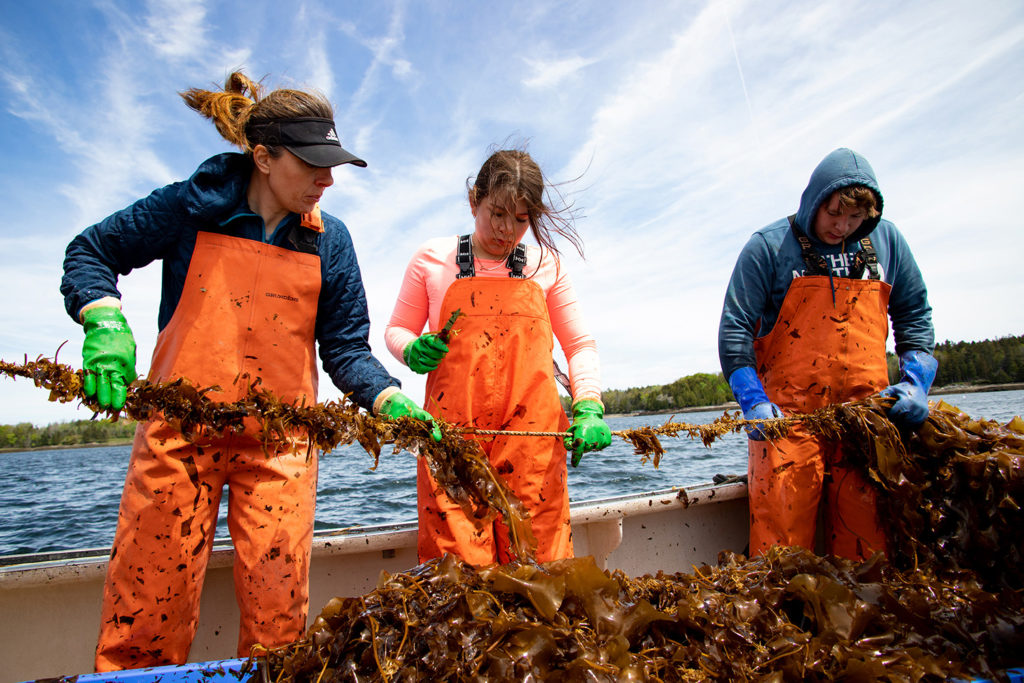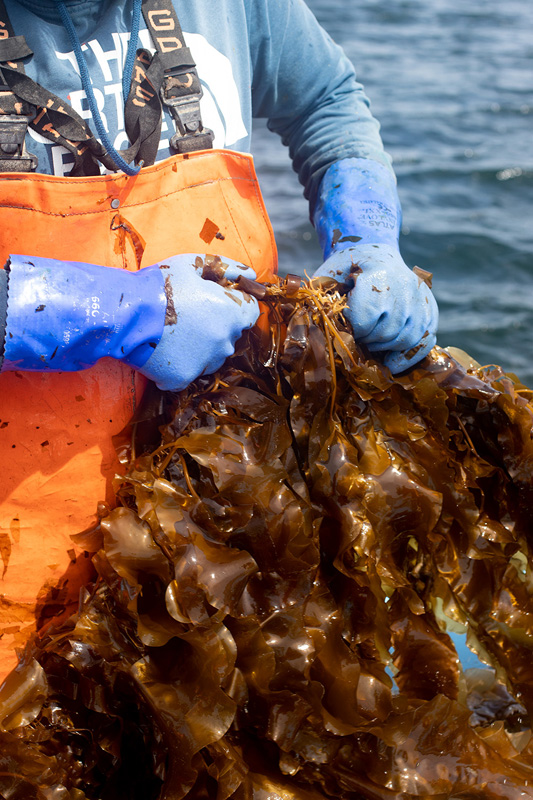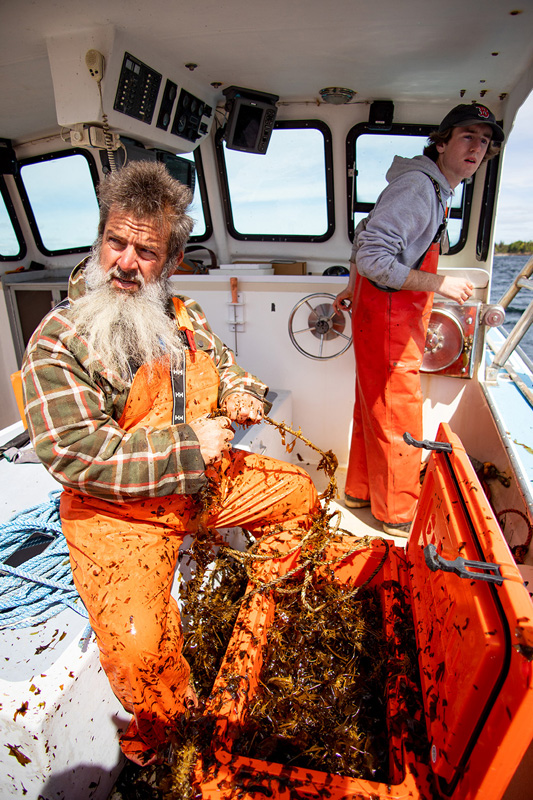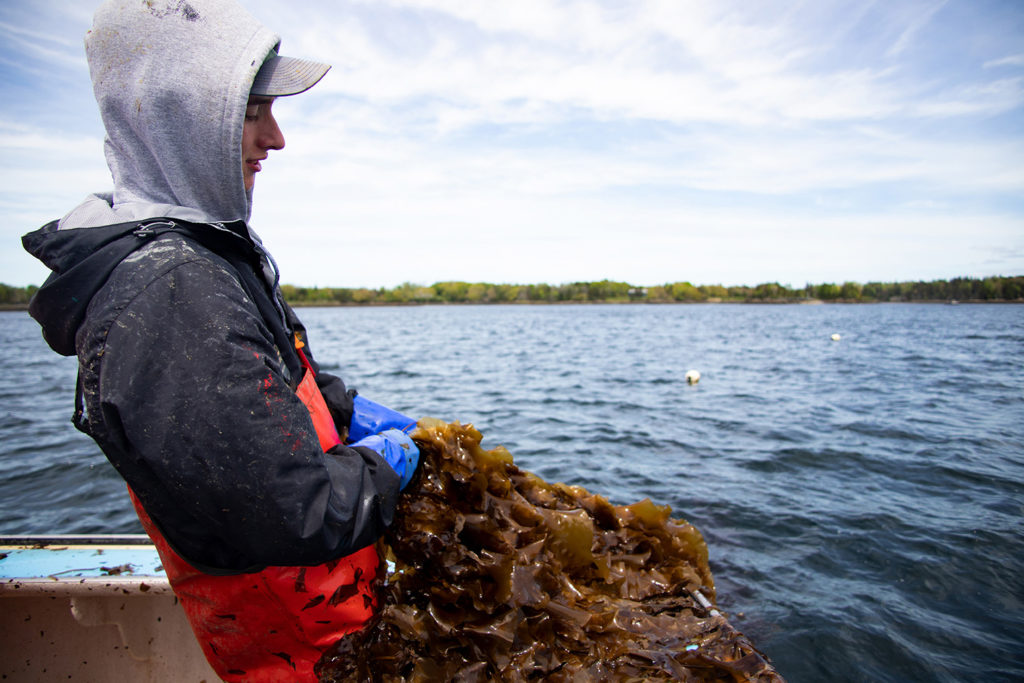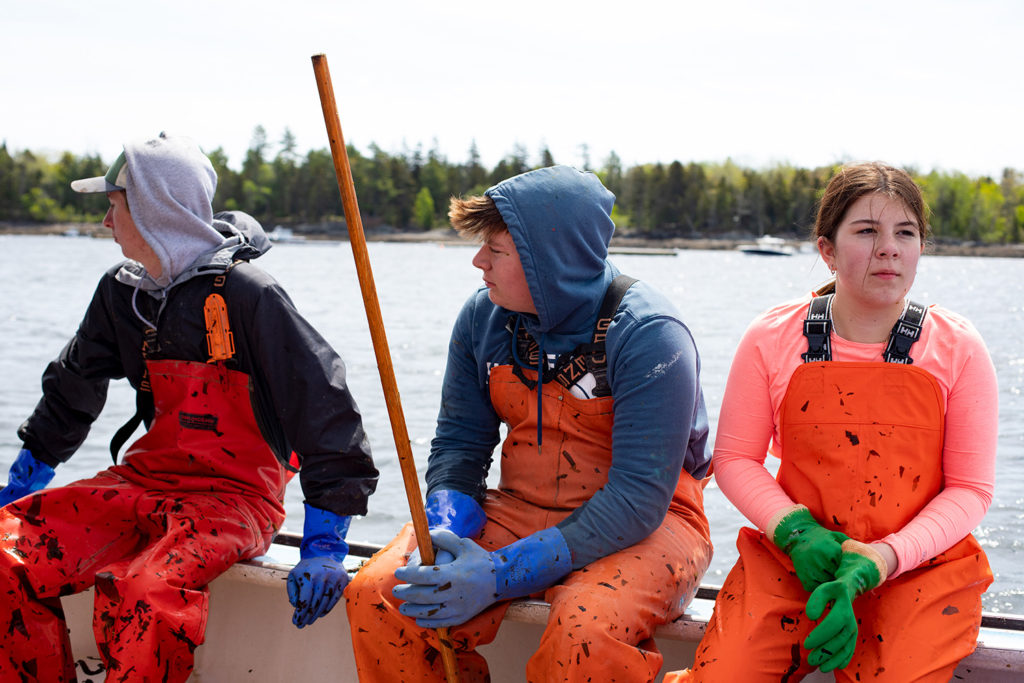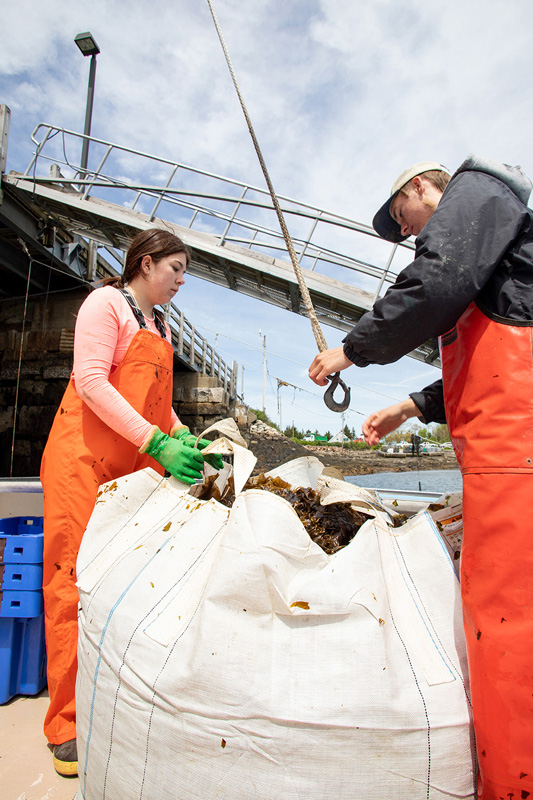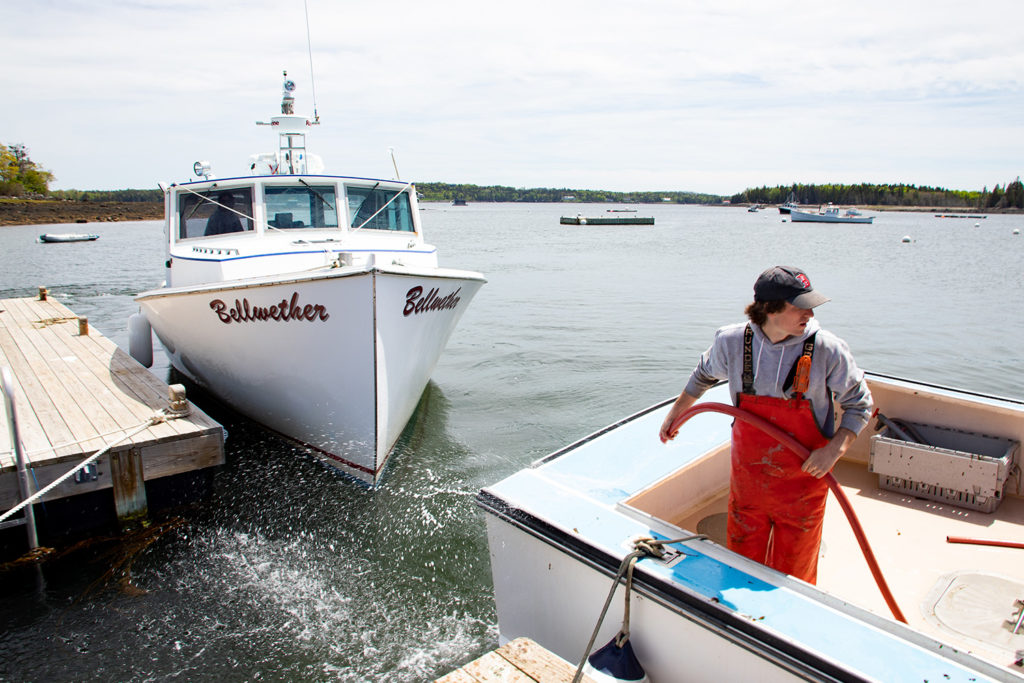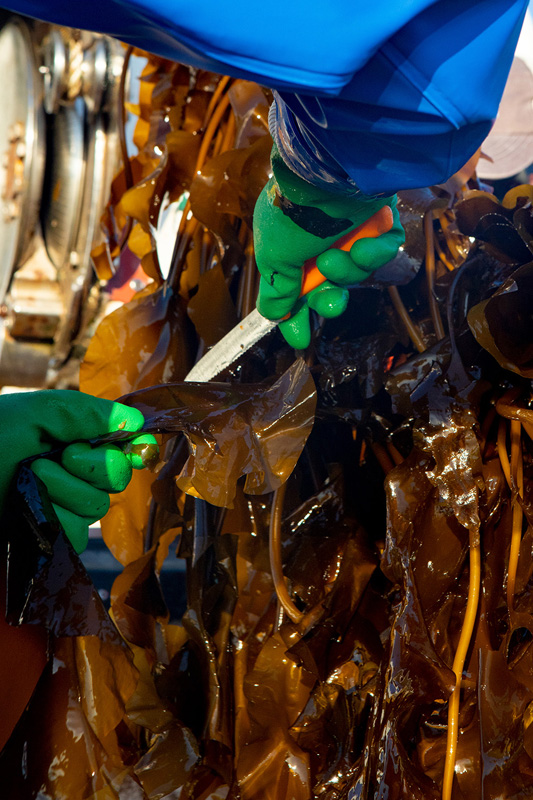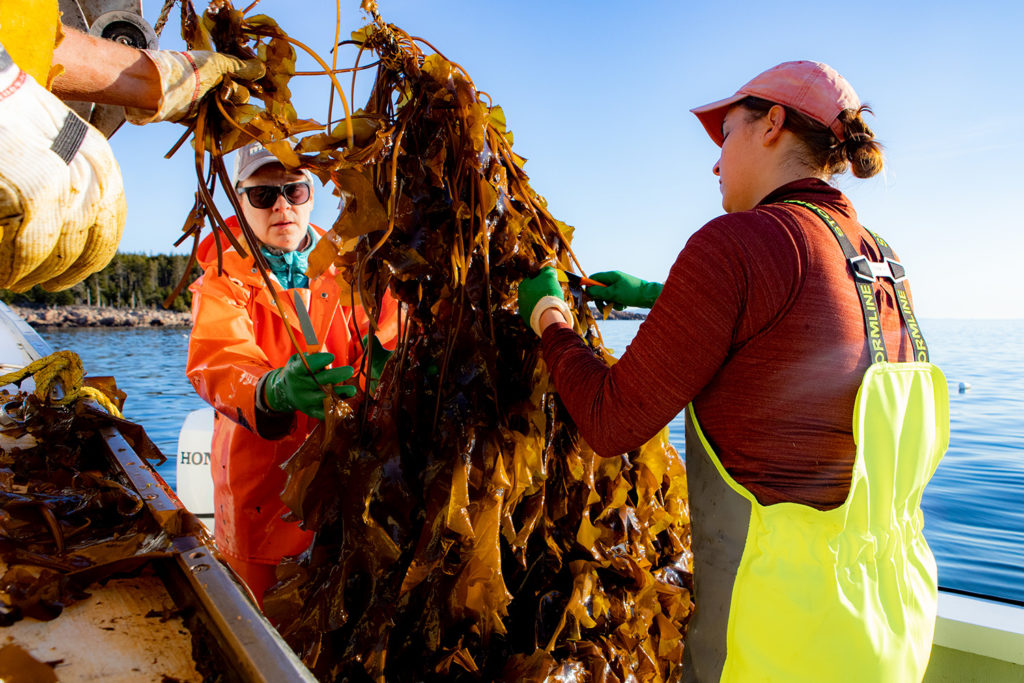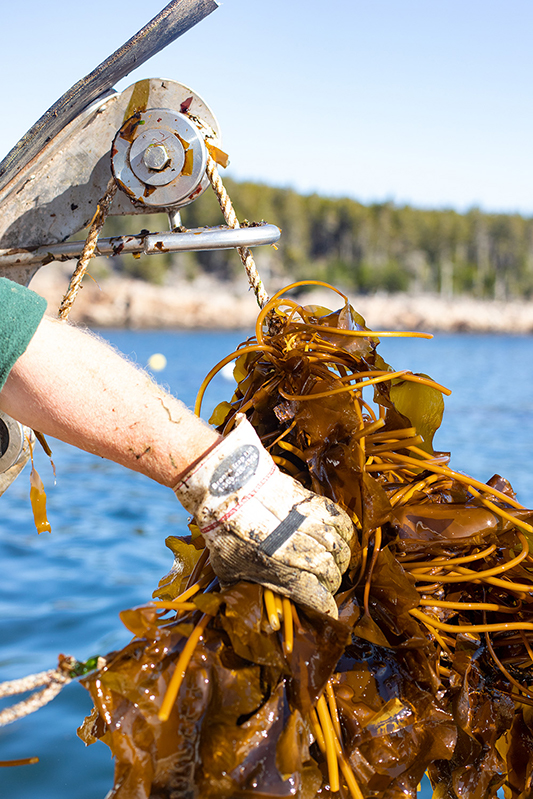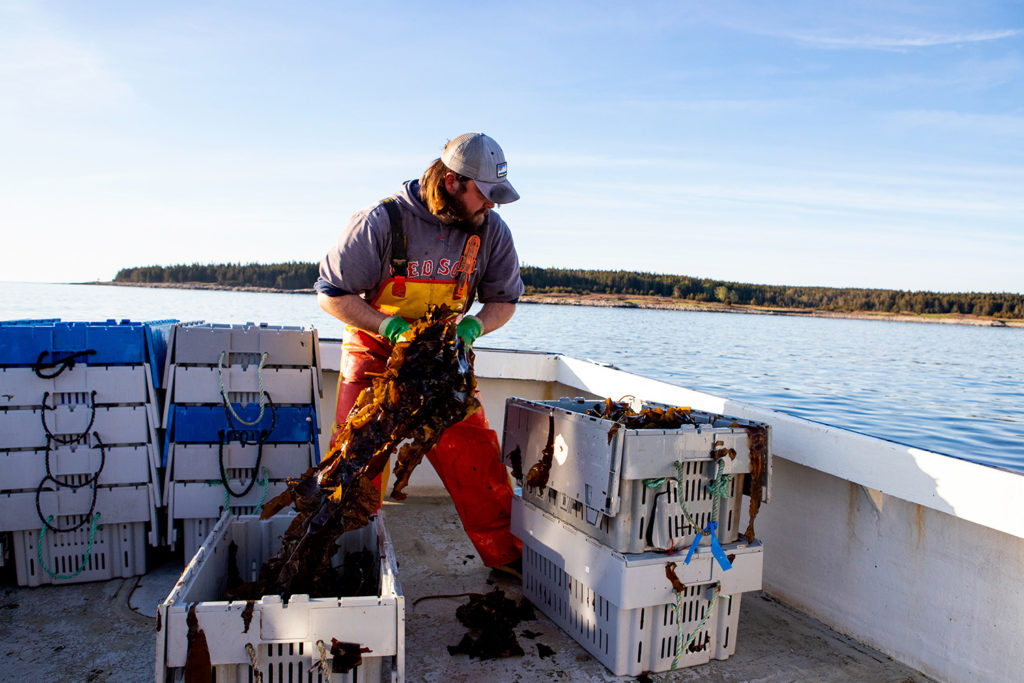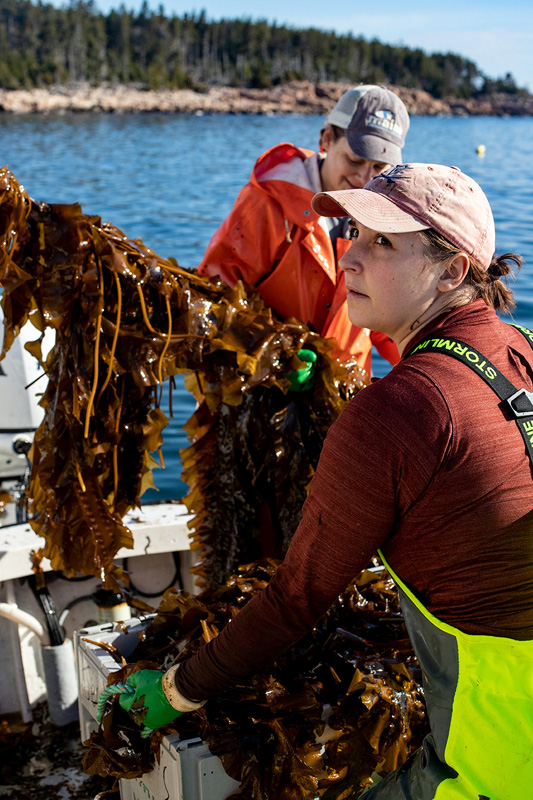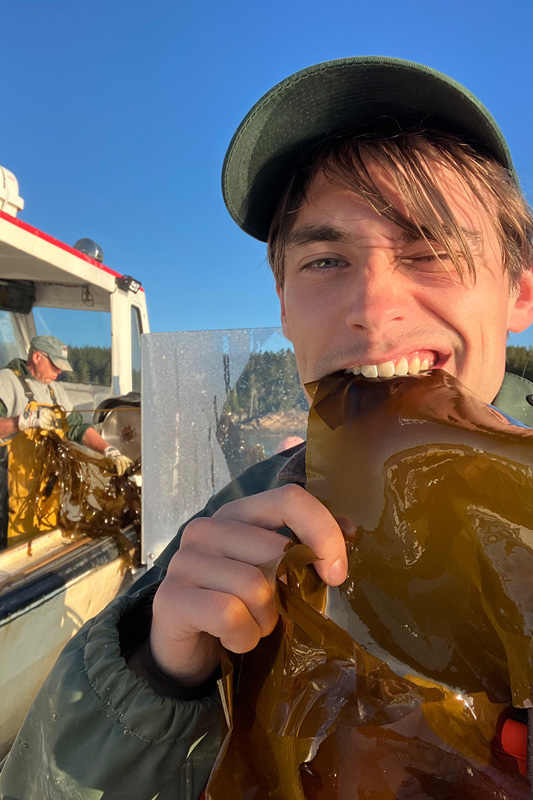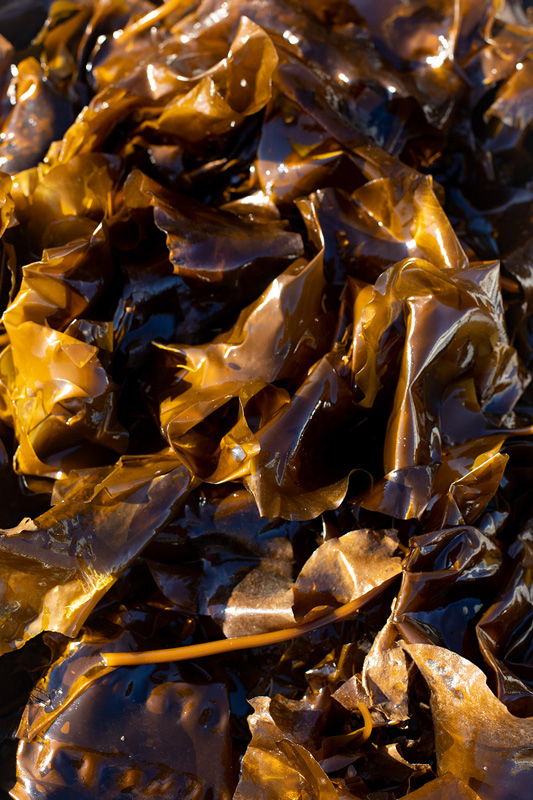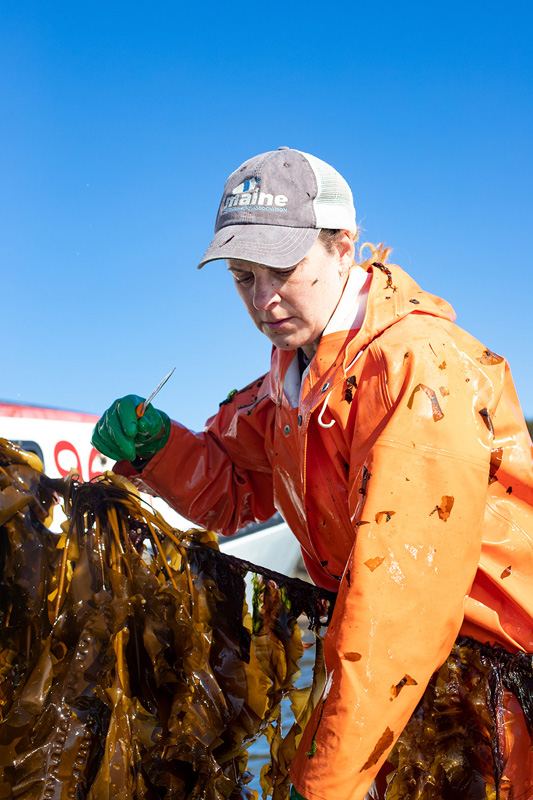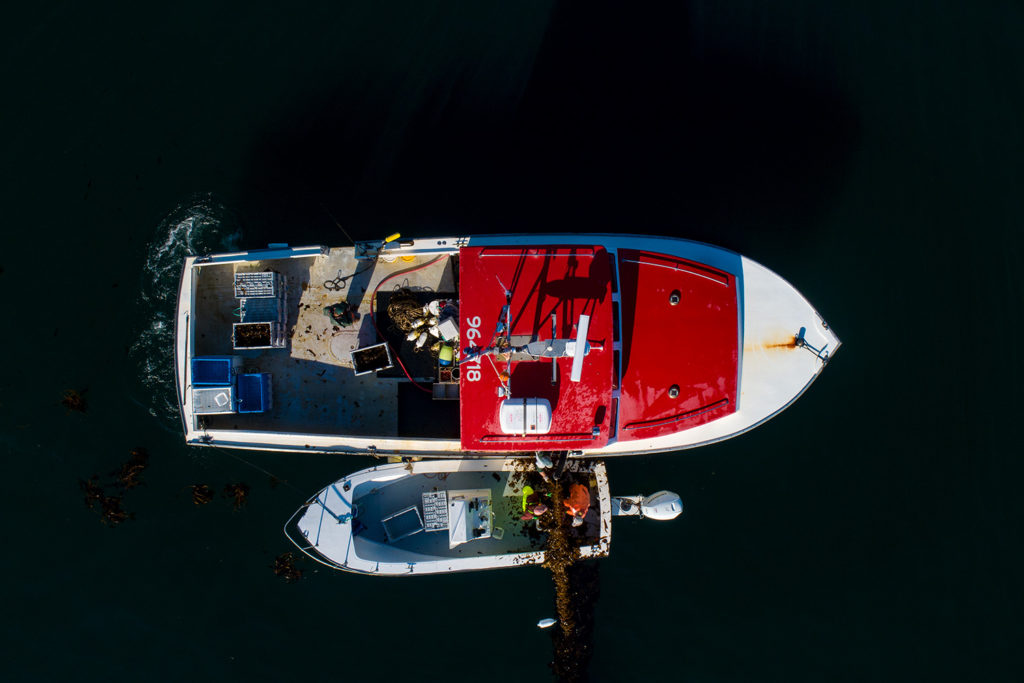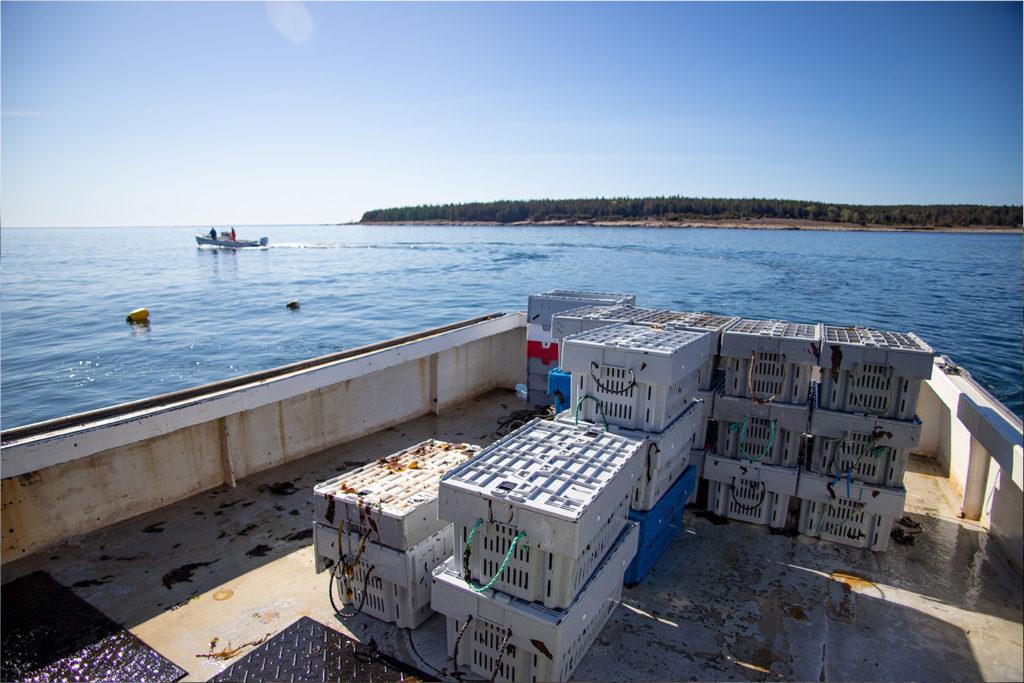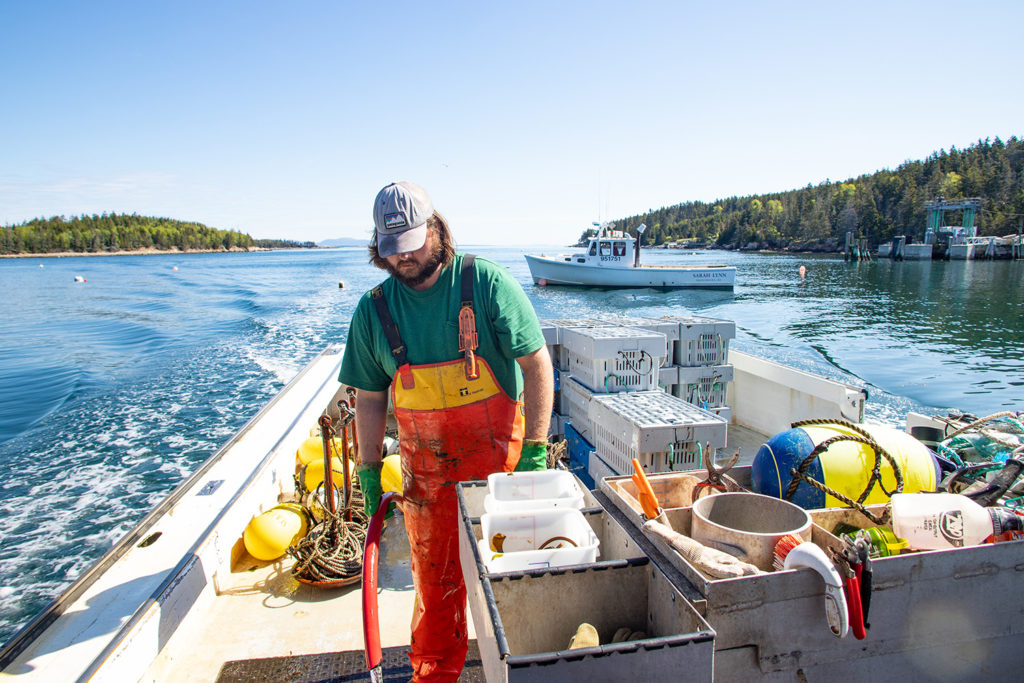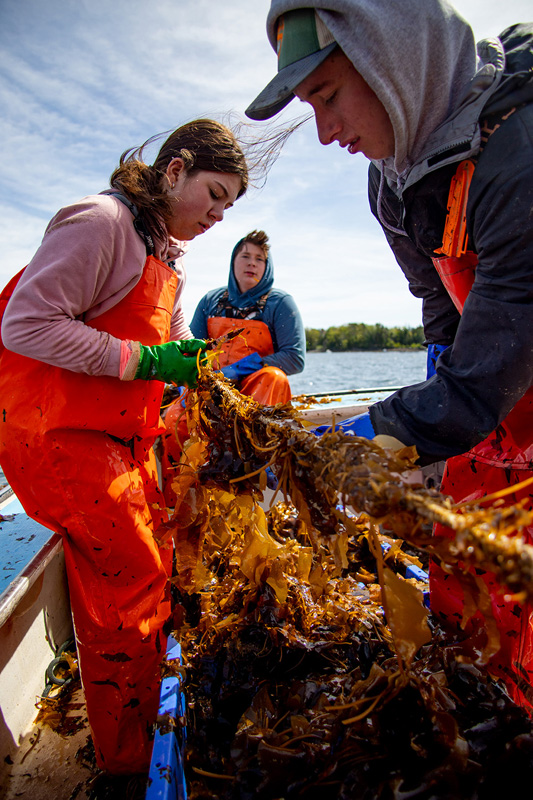
Kelp season seems to come all at once on the coast of Maine. In part due to the nature of the organism and its habitat, and in part due to the needs of kelp harvesters and processors, you can count on most farms being harvested within a couple of weeks in May and June. This is how I found myself on two kelp farms on two separate islands in a matter of three days. With the mission of documentation and storytelling, I lugged my camera gear from Penobscot Bay to the Downeast coast. In doing so, I was able to appreciate the role that aquaculture plays in creating a more resilient future for Maine’s coastal communities and economies.
The first of the two farms is located near the Midcoast island of Islesboro, and is operated by 14-year-old, Gaby Zlotkowski, a young entrepreneur who turned sibling power dynamics upside-down by employing her older brother and his friends to help out with the harvest. Gaby’s mother, Kim Grindle, is the owner and operator of Islesboro Oyster Co., so the affinity for aquaculture is generational, and Gaby was supported by her family to succeed with her harvest. Also present for the harvest was Ken Sparta of Spartan Sea Farms, a fellow kelp farmer who graciously took on the responsibility of transporting the kelp in giant plastic bins down to southern Maine (he also graciously took on the responsibility of transporting the author to and from the Lincolnville ferry terminal).
Ken spent much of the time on the boat looking for the perfect stipes (kelp stems) for an ingredient for a cocktail at a bar, a clever application for this salty sea vegetable. Kelp cocktails are one of the many concoctions that indicate that the product’s popularization and ubiquity is ever-increasing. Personally, my palate shies away from cocktails of the savory variety, but to those who enjoy martinis and bloody marys, I imagine Kelp is a delectable garnish. Highlights from this harvest include Gaby’s older brother tripping and falling into a lobster crate and a healthy sibling rivalry that took me back to my adolescent years.
The next day, after traveling Downeast via Route 1 and then hitching a ride on a lobster boat out of Bass Harbor, I found myself on the island of Frenchboro, a location on the Maine coast I can best describe as “my happy place”. I spent the night on Lunt Harbor with my friends, Dan and Tati, who were also crew members for the harvest. By 5:00 the next morning, we were out on the water headed out to another kelp farm—this one operated by Rachel Bishop, a kelp farmer who I had met years ago back when she was first getting started.
On my first trip to Frenchboro in 2018, I accompanied Island Institute staff as we scouted out footprints for Rachel’s farm, taking water quality samples of several proposed locations. Rachel was a member of the former Island Institute initiative known as the Aquaculture Business Development program, in which the Island Institute arranged for training and networking for marine entrepreneurs to diversify their livelihoods with mussel, oyster, and—you guessed it—kelp aquaculture. Four years later, the positive results are showing: the aquaculturists trained by this program have growing farms, and some have inspired others to consider aquaculture as well. Seeing Rachel’s farm go from a dream and a water sample to a series of submerged lines covered in kelp was a fulfilling experience.
But not everything about kelp farming is fun and games. The kelp growing season is over winter which means things can certainly go wrong between seeding in the fall and harvesting in the spring, before the water gets too warm and the kelp too foul. While the growing season is convenient, especially for most of those in the lobster industry who have an off-season for lobstering that aligns with the critical kelp-growing months, the winter can be unforgiving. A Nor’ Easter damaged part of Rachel’s crop, but she still prevailed with a fruitful harvest—thick golden locks of sea vegetables were plentiful. The harvest sure seemed bountiful to me, as I put away my camera after the kelp was off the lines and helped transport it to the mainland. Hauling crate after crate onto dry land was no easy lift—literally. Gravity was working against us; the tide was low with the gangplank at a 45-degree incline. We persisted and delivered the product to a U-Haul waiting at the dock.
Within three days, I had seen hundreds of pounds of kelp sustainably harvested from the Atlantic Ocean and head to market to be consumed in salads, purees, and cocktails, something I would have never considered commonplace just half a decade ago. The marine economy is changing in Maine, and while the backbone of the coastal economy may be King Lobster for years to come, it comforts me to know that there are innovators—some of whom are still too young to drive a car—who are taking income diversification seriously. The coast of Maine is changing like the rest of the world. The Climate Crisis and other threats to our fisheries loom over those who work on the water, and without those who are willing to take risks and experiment with new income streams, we will remain defenseless and overdependent on a single natural resource industry. I am grateful for Gaby, Rachel, and their crews, for taking that important leap and for letting the storyteller tag along.

